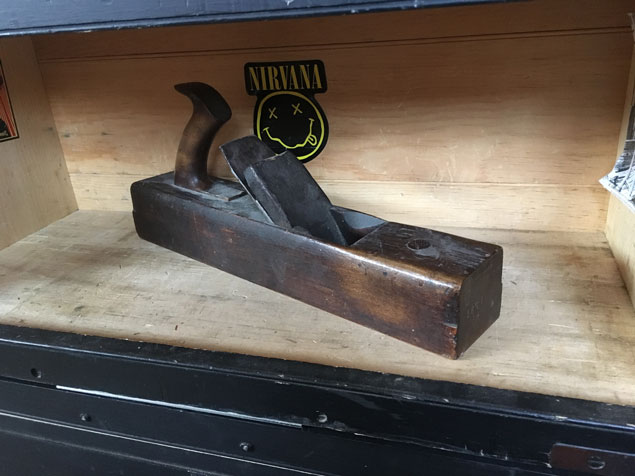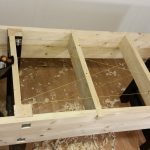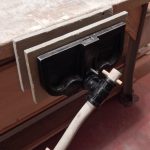We may receive a commission when you use our affiliate links. However, this does not impact our recommendations.
At the beginning of a hand tool class at the Marc Adams School of Woodworking, one of the students stopped me as I was passing by his bench.
“I have a question for you,” he said. “What is this plane for?”
He held up a chisel plane.
“I thought it looked really useful,” he said, “maybe for planing tapers on legs.”
I knew I was about to break his heart. There is a significant number of hand tools out there that are intended for extremely specialized tasks. And yet many beginners buy them for one of three reasons:
- They look really useful for some imagined task.
- The woodworker is a “completist” and psychologically requires a full set of anything he or she purchases.
- The vintage versions of the tools are quite rare and expensive, and they mistakenly equate monetary value with utility.
Why are there 2,000 No. 5 jack planes for every two No. 212 scraper planes in the wild? Why are 8-point crosscut handsaws in every barrel at a flea market, and yet I’ve never seen an original halfback saw for sale? Why is nearly every No. 444 dovetail plane found in the box with its original cutters – untouched by human hands?
There are several reasons. But to boil it all down: If a tool is rare that usually means it was a commercial failure or it was intended for an extremely specialized operation.
(That said, there have been several rare vintage tools that have become useful as a result of modern manufacturing. Two examples: Shooting-board planes and bevel-up bench planes. Vintage examples were too fragile or difficult to make for a wide audience. But modern milling machines and surface grinders have made these tools robust and affordable.)
So when woodworkers ask me what a beginning set of tools should look like, I tell them to look for the most common tools at a tool meet for the Mid-West Tool Collectors Association. If you need bench planes, you’ll find tons of No. 4s, No. 5s and No. 7s. Need a block plane? It’s difficult not to find a No. 60-1/2 (or its equivalent). How about chisels? The 1/4”, 1/2” and 3/4” sizes litter the “Everything’s a Dollar” boxes at tool meets.
If you’re a tool collector, seek the rare. If you are a beginning user, seek the common.
Once you have the basic set of tools and know how to use them, your work will dictate the specialty tools you might need. For example: I make lots of chairs. So having both a flat-bottomed and curved-bottom spokeshave are essential for my work. But most woodworkers need only the flat-bottomed one.
The more important point is this: Tools are like kittens or puppies. Having one or two around the house can be a rewarding, meaningful experience. Having a houseful of them is a sure path to misery and neglect for both you and the animals.
— Christopher Schwarz
Here are some supplies and tools we find essential in our everyday work around the shop. We may receive a commission from sales referred by our links; however, we have carefully selected these products for their usefulness and quality.










I just started woodworking with hand tools not too long ago ,and i agree there is a lot of different planes out there, but as a beginner the first plane i bought was the veritas low angle jack plane and i must say thats a first to buy when u start out . Good for a lot of tasks. Then at least you dont have to spend the money on a bunch of planes when u can have the one until you get more into it or have more experience or money.
As long as we’re talking tools, it’s been almost a year since you posted about an experiment, wherein you’d use a number 2 for a year, in lieu of a number 4.
Have you made it a full year?
Couldn’t agree more. Recently I’ve been upgrading the frankly crummy collection of “homeowner” grade tools that have accumulated with me over the past 30+ years. And in so doing, I’ve been leaning strongly toward hand tools only and favoring old & used ones still in good workable condition. (Sorry, new-tool-makers, but you guys charge more than I feel comfortable spending.)
In hitting both online old-tool dealers and the Big Auction site, I’ve been amused to see the dichotomy between tool collectors and tool users. Luckily, I’m in the user camp, so I’m always bottom-scavenging, which means me and Evapo-Rust are on first-name terms. Anyway, people who are looking for user-grade tools have a lots that’s available, provided you’re willing to spend some time poking around.
By the way, that’s a nice jack plane up top there. I’m curious as to who made it. I have one that might be a twin, except mine has a closed tote. It’s 15″, made by Edward Carter of Troy, N.Y. (as the toe stamp says), and it has the quartered hardwood bonk-button on the nose.
I have lived this and learned that Daddy has a tool problem. There is no greater tool value than a $20 Stanley #5. I use it every single time I’m in the shop. The engineer in me loves the Stanley #55. I have never used it, and I probably never will. Find the line between ‘woodworker’ and ‘tool collector’, and decide which you want to be; seek professional help if you say ‘both’.
With all the fancy tools that are coming out now, makes you wonder what’s going to be rare and priceless in 150 years. Magnetic dovetail guide?
All good, sensible advice. I’d say “disobey you at peril.”
Do I detect a word of caution for some budding “cat lady” some of us might know?
That’s great advice. I bought the Veritas cabinet maker’s trimming plane (it’s essentially a chisel plane) when it first came out. I had some extra dough from some side work and it was offered at a discount. I’ve probably used it about 30 times or so but when I did it was exactly what I needed for that particular task; it fit perfectly (and performed wonderfully) right into the spot where that operation was needed. I’ve been to a couple of garage sales wherein the previous shop owner passed. It was sad to see all those tools, some hardly or never used, being sold in bulk. Same deal with all that wood. The woman selling it all told me that her husband had purchased some from another widow. Yikes. I used it as quickly as I could so that my wife wouldn’t repeat that pattern.